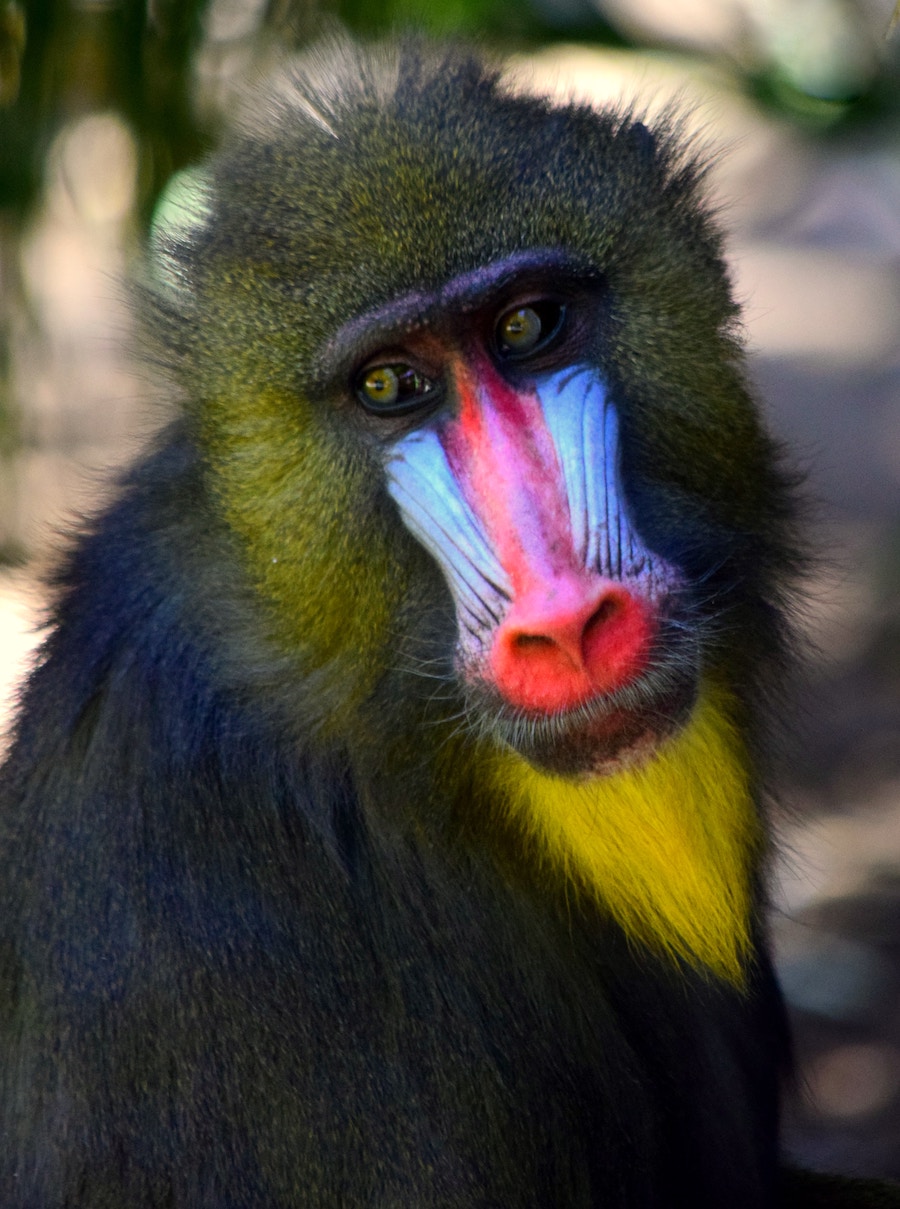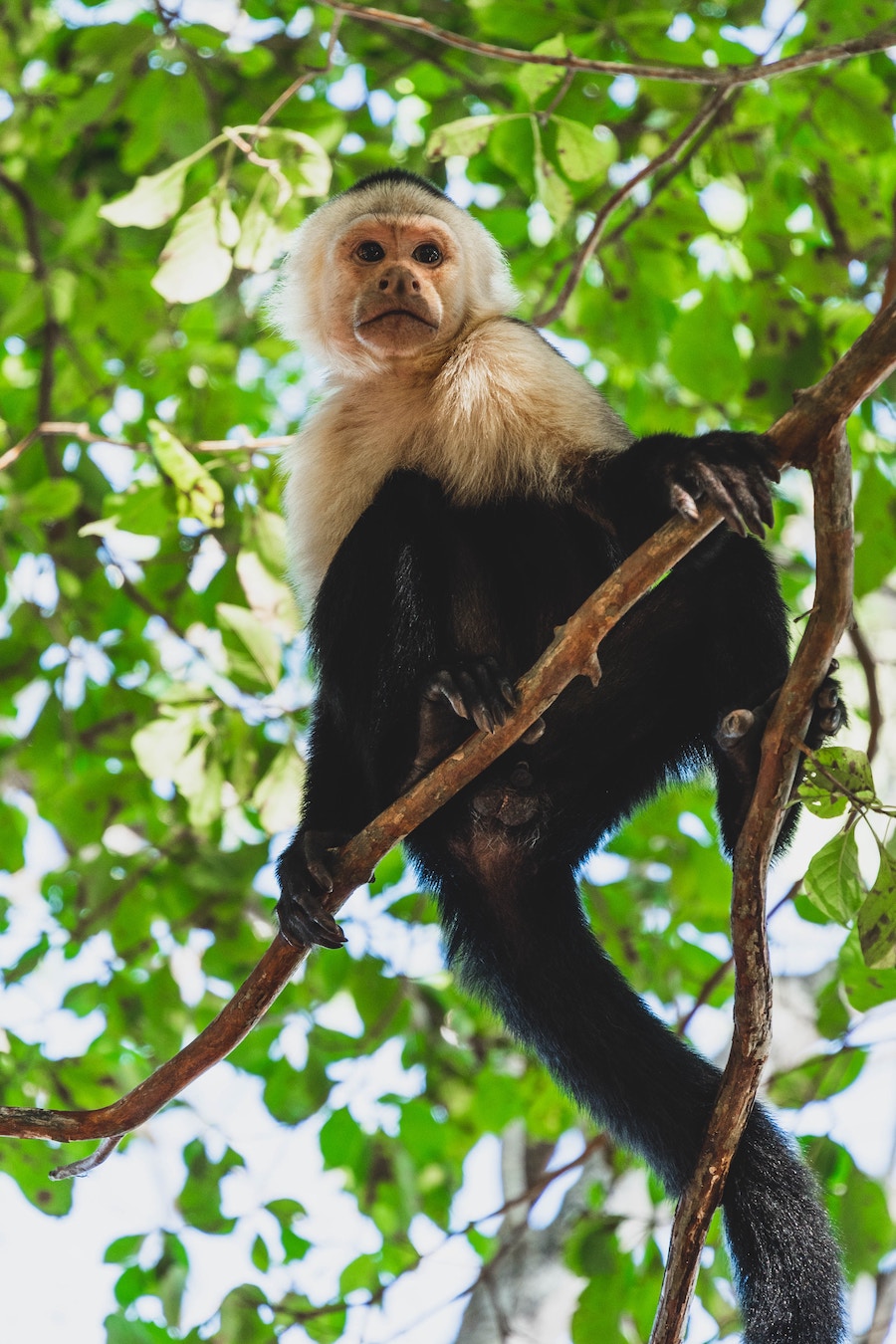Monkey Facts
Monkeys have been a focal point of human curiosity, tales, and admiration for centuries. Whether you’re a true monkey enthusiast or just intrigued by their lively behavior and close genetic ties to us, you’re in for a treat! Let’s uncover some enchanting facts about these captivating creatures.
Old World Monkeys vs. New World Monkeys: Know the Difference
Monkeys, with their endearing personalities and remarkable adaptability, are spread far and wide across our planet. Yet, for all their ubiquity, there’s a complex taxonomy beneath their categorization. Understanding the nuances between Old World and New World monkeys is essential for every primate enthusiast. Let’s delve deep into the captivating contrasts of these two primary groups, exploring beyond just the geographical distinctions.
Old World Monkeys: Natives of Africa and Asia
Originating from the vast terrains of Africa and Asia, Old World monkeys represent a diverse array of species.

Physical Attributes:
- Nose: One of the striking distinctions lies in their nostrils. They sport smaller, downward-facing nostrils set closely together, differentiating them from their New World counterparts.
- Tail: While they possess tails, these are generally not prehensile. In other words, they don’t use them as an extra ‘hand’ for grasping tree branches or swinging.
- Teeth: Another distinction lies in their dental formula. Old World monkeys have two premolars, an adaptation believed to have evolved due to their specific dietary needs.
Exemplary Species:
Mandrill: Often hailed as the largest of all monkey species, the Mandrill is easily recognizable by its vivid and colorful facial features. Native to the rainforests of Central and West Africa, these primates have a hierarchical society where dominant males showcase more vibrant colors.
Proboscis Monkey: Endemic to Borneo, this species is distinctive because of its elongated nose, particularly pronounced in males. Its nose is believed to amplify calls and make them more resonant.
New World Monkeys: Denizens of Central and South America
In stark contrast, New World monkeys have adapted to the lush, dense jungles of Central and South America, each species exhibiting unique evolutionary traits suited to their habitat.

Physical Attributes:
- Nose: New World monkeys possess wide, side-facing nostrils spaced apart. This configuration is one of the tell-tale differences between the two categories.
- Tail: Many species within this category have evolved prehensile tails, often with a tactile pad at the tip. This tail functions almost as a fifth limb, granting them unparalleled agility in the dense rainforests.
- Varied Size and Vision: Size-wise, New World species tend to be smaller, but they compensate with a broader vision spectrum. Some species are known to have trichromatic vision, similar to humans
Exemplary Species:
Spider Monkey: Renowned for its incredibly agile and lengthy tail, it uses it for locomotion and as a tactile and gripping tool. They’re primarily fruit-eaters, crucial in forest ecology as seed dispersers.
Pygmy Marmoset: As one of the smallest primates in the world, the pygmy marmoset is a testament to the vast size range of New World monkeys. Weighing merely 100 grams, these tiny creatures have a penchant for tree gum, drilling holes in the bark to access this nutritious sap.
By understanding the intricacies of these two categories, we appreciate the vastness of monkey diversity and acknowledge the evolutionary marvels that have sculpted them. From the dense rainforests of the Amazon to the varied landscapes of Africa and Asia, monkeys, in all their forms, continue to enthral and educate us with their survival strategies and vibrant behaviors.
Not All Primates are Monkeys
It’s a common misconception to label all primates as monkeys. However, primates are a vast group that includes monkeys, apes, lemurs, and tarsiers. Remember, while all monkeys are primates, not all primates are monkeys!
Average Age of Monkeys: Understanding Their Lifespan
Monkeys, like many other animals, have varying lifespans depending on factors like their species, habitat, and size. Let’s delve into the details.
Small Monkeys vs. Large Monkeys
Small Monkeys
Species such as marmosets and tamarins usually have shorter lifespans. Example: The common Marmoset typically lives up to 12 years in the wild, but this can extend to 16-20 years in captivity due to improved care and reduced threats.
Large Monkeys
Species like baboons, macaques, and mandrills tend to live longer. Example: In the wild, Mandrills can live up to 20-25 years, and with the benefits of captivity, this can stretch to 30 years or more.
Life in the Wild vs. Life in Captivity
Wild Life
Captive Life
While captivity may restrict their natural behaviours, it provides consistent food, medical care, and protection from predators. Examples: Capuchin Monkeys, on average, live for 15-20 years in the wild. However, in captivity, their lifespan can sometimes extend to 40-50 years.
Other Notable Monkeys:
Howler Monkeys typically live for 15-20 years in the wild but can live a bit longer in captivity, often over 20 years.
Spider Monkeys, with an average lifespan of 20-25 years in the wild, can live up to 30-35 years when in human care.
Monkey Sizes
Monkeys exhibit a wide range of sizes. This variety in size often serves specific purposes in their ecology, behavior, and social dynamics.
Biggest: The mighty Mandrill stands out not only because of its vivid coloration but also its substantial size. Male mandrills are particularly impressive. They can weigh up to 30 kg (66 lbs) and measure about 61 cm (24 in) in body length, excluding the tail. This makes them significantly larger than females, a phenomenon known as sexual dimorphism, where there’s a marked size difference between males and females within the same species.
Smallest: On the other end of the scale is the enchanting Pygmy Marmoset. These pocket-sized primates weigh a mere 100 grams (3.5 oz) and measure about 5 inches. Their diminutive stature allows them to access the smallest branches and twigs in search of their primary diet, gum from trees.

Sexual Dimorphism
Monkeys, like many animals, sometimes exhibit notable differences in size between males and females, known as sexual dimorphism. This difference serves various purposes:
- Competition Among Males: In species where males compete for mating rights, larger males tend to have an advantage, whether it’s through confrontation or merely by intimidation. The Mandrill is a perfect example; larger males with more vivid colorations generally have higher reproductive success.
- Ecological Segregation: By having different sizes, males and females might reduce competition between the genders by feeding on other resources or utilizing different sections of their habitat.
- Parental Roles: In some species, females might be closer in size to their offspring, aiding in nurturing, while males might be more significant and serve as protectors.
Examples of Sexual Dimorphism in Monkeys
- Proboscis Monkeys: Native to Borneo, males are noticeably larger, with a distinctive long nose. This nose serves as a resonating chamber, amplifying their calls. Larger males with longer noses tend to attract more females.
- Howler Monkeys: Another example is the Howler Monkey of South America. Males are larger, with a specialized voice box that allows them to produce deep, resonating calls that can be heard for miles.
Some Quick Fire Questions about Monkeys
1. What Do Monkeys Eat?
Monkeys are generally omnivores. Their diet includes fruits, leaves, seeds, nuts, flowers, insects, and even small animals. However, diet specifics can vary based on their habitat and species.
2. Why Are Bananas So Closely Associated with Monkeys?
While monkeys enjoy eating Bananas, among other fruits, their close association with bananas is a commercial fabrication. Bananas are a cultivated domesticated plant not commonly found in the wild. The association likely comes from early cartoons and media depictions showcasing monkeys loving bananas. While they do enjoy them, their natural diet is diverse.
3. How Many Species of Monkeys Are There?
There are over 260 known species of monkeys, and ongoing research might even reveal more.
More Fun Facts About Monkeys
Most Endangered: The Hainan gibbon (Nomascus hainanus) is critically endangered. This monkey is found only in the Bawangling Nature Reserve on Hainan Island, China, located in the South China Sea, and only has about 35 individuals left in the wild.
Most Common: The Rhesus Macaque, often seen in many parts of Asia, is one of the most widespread and commonly found monkeys. The Rhesus Macaque is so common that it is considered invasive and can thrive in every continent except Antarctica.
Monkeys in Cultures Around the World: Throughout history, monkeys have been revered, worshiped, and symbolized in various cultures. In Hindu mythology, Hanuman, the monkey god, is a prominent figure. The Chinese zodiac even dedicates a year to the monkey, symbolizing cleverness and curiosity.
Superb Swingers: Many monkeys are arboreal, meaning they live in trees. They swing from branch to branch using their arms in a movement called “brachiation.” Gibbons are particularly adept brachiators. This method of locomotion allows them to cover long distances in the canopy quickly, efficiently, and safely.
Color Vision: Most New World Monkeys are dichromatic (they see two primary colors), while many Old World Monkeys have trichromatic vision, similar to humans. This means they can perceive the full spectrum of color, which helps them detect ripe fruits among the green foliage.
Some monkeys, like the Uakari, choose their mates based on the redness of their faces, which often depicts how healthy an individual is. A redder face is a direct indication of their good health.

Cheek Pouches: Some monkeys, like the macaques, have cheek pouches. These pouches allow them to gather food quickly and store it to be chewed and digested later. This mechanism helps them forage rapidly, reducing the risk of predation or theft by other monkeys.
Highly Social Creatures: Monkeys are known to have intricate social structures. They live in groups, which are often called troops, and have a hierarchy that dictates many aspects of their social interactions. These dynamics lead to complex behaviors, including reconciliation, alliances, and even deception.
Varying Vocalizations:Monkeys have a wide array of vocalizations, each carrying a different message. These can range from warnings about approaching predators to calls signaling the discovery of food. Some monkeys even have specific alarm calls that vary depending on the type of predator.
Grooming Rituals: Grooming isn’t just about cleanliness for monkeys. It’s a significant social activity. Monkeys reinforce social bonds, establish trust, and even establish dominance hierarchies through grooming.
Tail Talents: While not all monkeys have prehensile tails, those that do, particularly some New World species, use them as an extra hand. They can grip branches, balance on trees, and even pick up objects with them.
Tool Use: Certain monkey species, such as Capuchins, have been observed using tools in the wild. They use stones to crack open nuts and twigs to extract insects from crevices. This behavior showcases their problem-solving abilities and adaptability.
Facial Expressions: Monkeys convey a lot through their faces. Their facial expressions play a vital role in communication, from baring teeth as a sign of aggression or dominance to puckering up their lips as a sign of submission or friendship.
Love for Water: While it’s a common misconception that all monkeys dislike water, some species, like the Japanese macaques (or snow monkeys), absolutely love it. They’re known to relax in natural hot springs, especially during colder seasons.
Mimic Masters: Monkeys are exceptional learners. They often learn by watching and mimicking the actions of others. This ability to mimic has made them stars in some human cultures, leading to the saying, “Monkey see, monkey do.”
Swing into this mesmerizing world of monkeys; you’ll never be short of amazement. They are creatures of wonder, and the more you know, the more you’ll appreciate their existence and the importance of conserving their habitats. Next time you find yourself at the zoo or trekking through the jungle, you’ll appreciate these magnificent creatures more, and maybe even be able to identify one.
